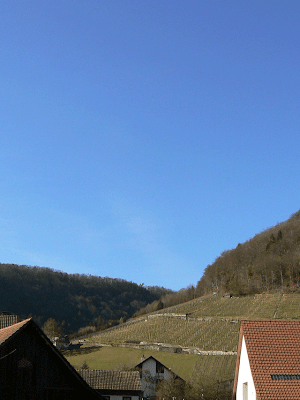
Die Fasnacht (Fastnacht in Germany) is the start of the Lenten fast, better known as Carnival. In Switzerland, Basel and Lucerne are considered to have some of the best festivities. Zürich, home to Zwingli (1484 to 1531) and the Protestant Reformation in Switzerland probably viewed the whole thing with suspicion. This year, the Basel celebration runs from the 26th to the 28th of February. The Rough Guide to Switzerland has a nice description of the annual event, and it is reproduced here.
Coming back to Villigen, this is the window display at Küng, a leather-goods shop in Brugg. If your eyesight is better than mine, you might notice that the poster at the right advertises the Basel parade and shows the prices for the 2007 "Blaggadde", which I guess are pins/badges (my Swiss-German is nigh non-existent, but it doesn't stop me from making wild guesses). The motto for 2007 is "D Strooss gheert uns!" which, I think -- please correct me if I'm wrong -- means the streets belong to us (die Strasse gehört uns, in high German). There will probably be a small parade in Villigen itself and this year (unlike last year), I'll be ready with my camera.
FYI: A DPer in Saarbrücken had a recent entry on the preparations for the Carnival in her area.
20070205




























